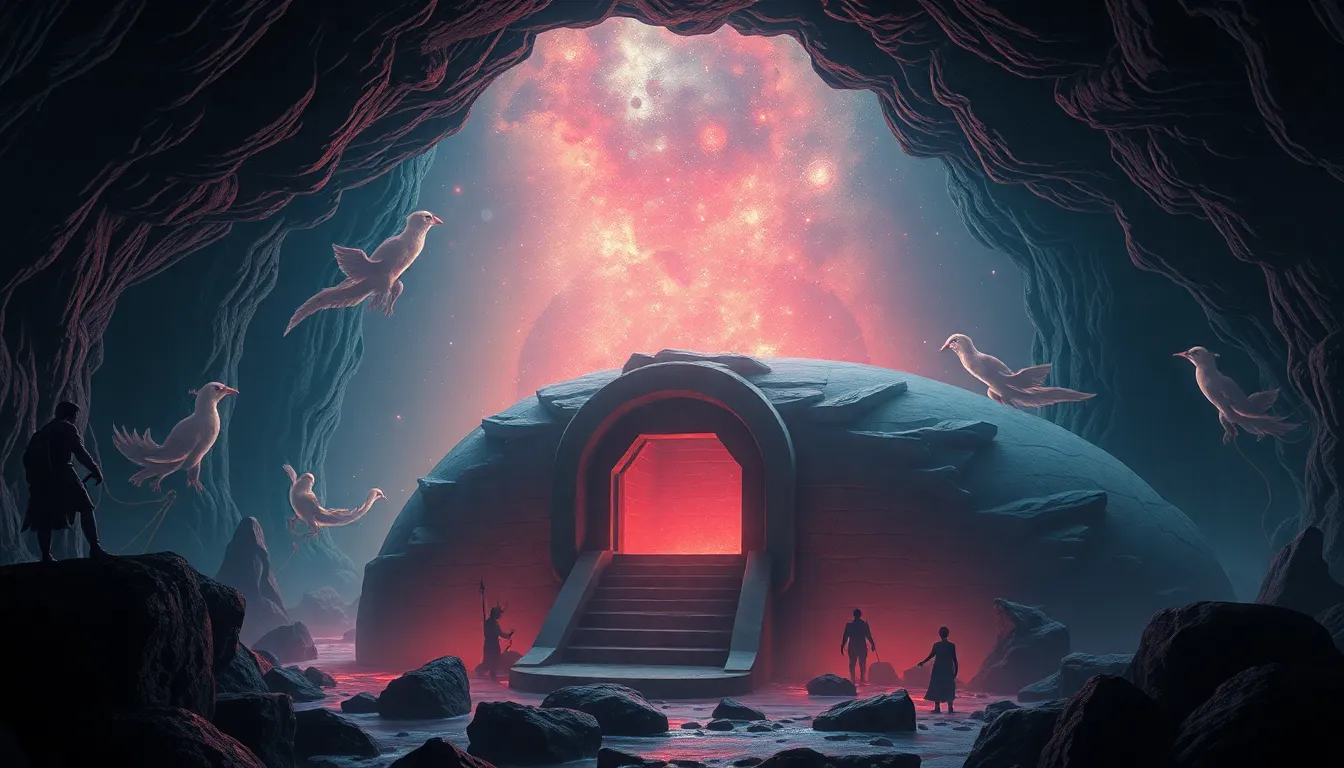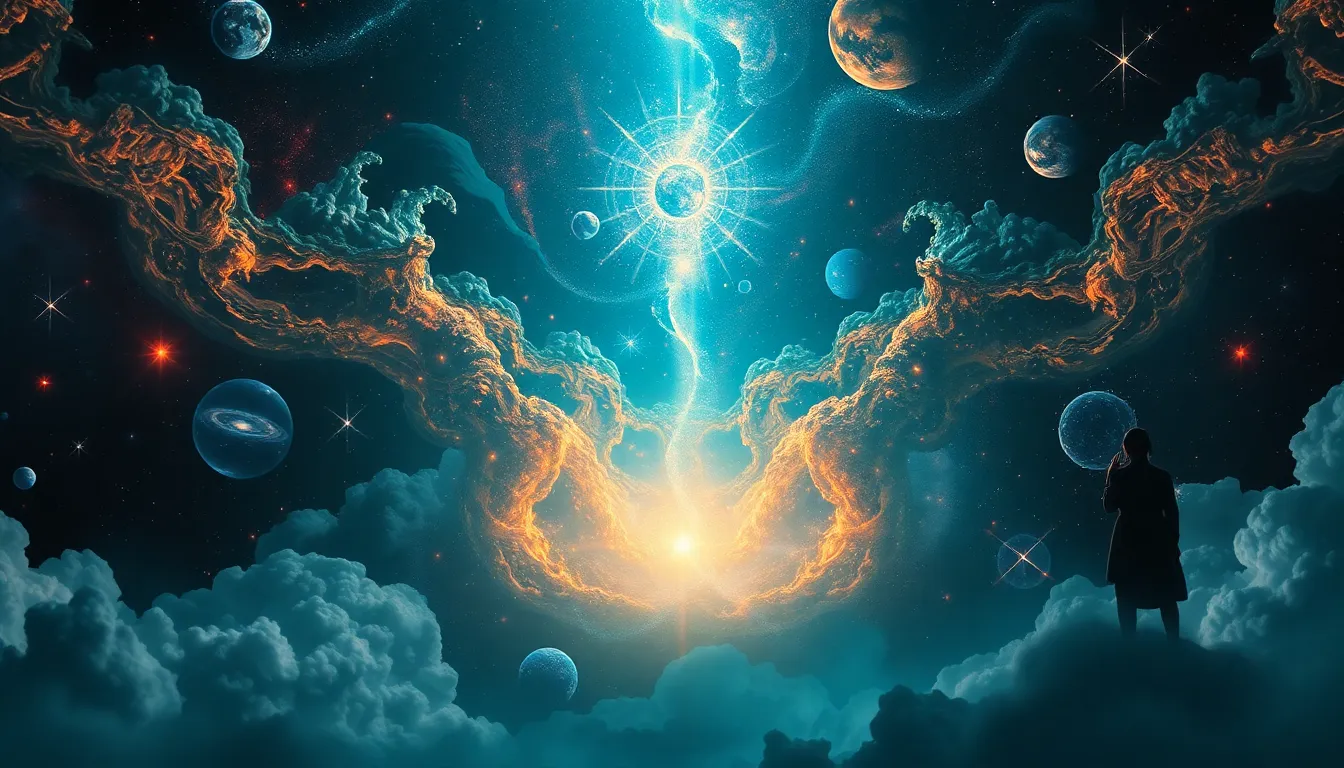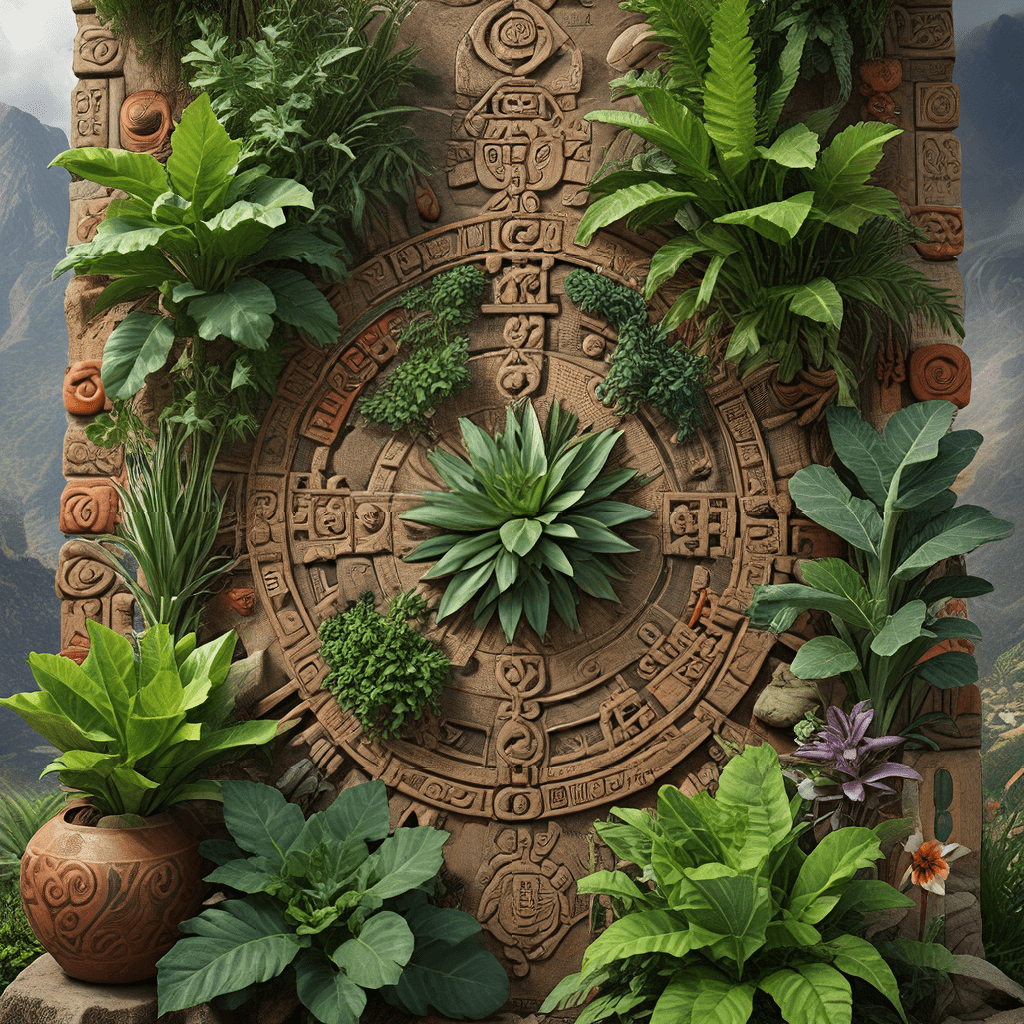The Underworld: Myths That Explore the Depths of the Soul
I. Introduction
The concept of the Underworld has fascinated humanity for centuries, manifesting in various forms across cultures. Generally, the Underworld serves as a realm where souls journey after death, often reflecting the beliefs and values of the societies that conceive them.
Understanding these myths is crucial for delving into human psychology. They not only provide insights into how different cultures perceive death and the afterlife but also reveal deeper truths about the human condition, our fears, and our aspirations.
This article aims to explore the Underworld across various cultures, examining its symbolism, key figures, and the role it plays in human experience, ultimately shedding light on the lessons we can draw from these narratives.
II. The Concept of the Underworld Across Cultures
A. Ancient Greek Underworld: Hades and its significance
In ancient Greek mythology, Hades represents the Underworld, where souls reside after death. Governed by the god Hades, this realm is often depicted as a shadowy place, filled with both torment and tranquility, depending on one’s life on Earth.
B. Egyptian Duat: The journey through death and rebirth
The Egyptian Underworld, known as Duat, is a complex realm where the deceased undergo trials to determine their fate. The journey through Duat often involves the weighing of the heart against the feather of Ma’at, symbolizing truth and justice, leading to either eternal peace or annihilation.
C. Hindu Naraka: The role of karma in the afterlife
Naraka in Hinduism is not a permanent abode but a temporary hell where souls experience the consequences of their actions (karma). Souls are eventually reborn, highlighting the cyclical nature of life, death, and rebirth in Hindu belief.
D. Norse Hel: The intersection of fate and the afterlife
Norse mythology presents Hel as the realm ruled by the goddess Hel. It is a place for those who did not die in battle, emphasizing a more neutral aspect of the afterlife. Here, the dead reside in a state that reflects their lives, connecting fate with the afterlife experience.
III. Symbolism of the Underworld in Myths
A. The Underworld as a representation of the unconscious mind
The Underworld often symbolizes the unconscious, housing repressed emotions, fears, and desires. It serves as a mirror reflecting our inner turmoil and the darker aspects of the human psyche.
B. Themes of transformation and rebirth
Many myths associated with the Underworld emphasize transformation. Characters often undergo significant changes, leading to personal growth or new understandings of identity.
C. The journey motif: Descent, trials, and ascension
The journey to the Underworld typically involves three stages:
- Descent: Entering the Underworld, symbolizing a confrontation with one’s fears.
- Trials: Overcoming challenges that test the character’s resolve and morality.
- Ascension: Emerging from the Underworld, often transformed and enlightened.
IV. Key Figures and Deities of the Underworld
A. Hades: The ruler of the Greek Underworld
Hades, often misunderstood as a malevolent figure, is the god of the Underworld who maintains order among the souls, ensuring that the balance of life and death is preserved.
B. Osiris: The god of resurrection in Egyptian mythology
Osiris embodies resurrection and regeneration, overseeing the afterlife and ensuring that souls are judged fairly. His myth represents the cycle of life, death, and rebirth.
C. Yama: The Hindu god of death and justice
Yama is both a judge and a guide for souls, leading them to their next life based on their karma, thus emphasizing justice in the afterlife.
D. Hel: The Norse goddess of death and her realm
Hel, the daughter of Loki, governs the realm of the same name. Her domain is often depicted as a place for those who lived normal lives rather than heroic ones, reflecting societal views on valor and fate.
V. The Role of the Underworld in Human Experience
A. The Underworld as a metaphor for inner struggles
Many individuals experience personal ‘underworlds’ in their lives, facing struggles that challenge their sense of self. These narratives resonate with the human experience of navigating life’s difficulties.
B. Psychological interpretations of myths in modern therapy
Modern therapists often use myths of the Underworld to help clients explore their inner conflicts and emotions, facilitating a process of healing and self-discovery.
C. Fear, acceptance, and understanding of mortality
The Underworld myths encourage contemplation of mortality, fostering acceptance of life’s transient nature and encouraging individuals to find meaning in their experiences.
VI. Myths of the Hero’s Journey to the Underworld
A. Orpheus and Eurydice: Love’s power and loss
Orpheus’s descent into the Underworld to retrieve his beloved Eurydice highlights the themes of love and loss, emphasizing the power of devotion and the pain of separation.
B. Inanna’s descent: A tale of power and identity
The Sumerian goddess Inanna’s journey to the Underworld represents a quest for identity and power, culminating in her resurrection and the restoration of balance in her life.
C. Dante’s Inferno: Exploring sin and redemption
Dante Alighieri’s work details an allegorical journey through the Underworld, examining sin, punishment, and ultimately, the possibility of redemption, reflecting the human condition’s moral complexities.
VII. The Underworld in Contemporary Culture
A. Representation in literature and film
Modern literature and films frequently draw upon Underworld themes, using them to explore complex narratives about human nature, morality, and existential questions.
B. The Underworld theme in video games and popular media
Video games often incorporate Underworld elements, allowing players to explore these mythic realms and confront their fears in interactive ways, further popularizing these ancient concepts.
C. The ongoing relevance of these myths in modern spirituality
Contemporary spirituality often reflects Underworld themes, encouraging individuals to face their inner darkness as a pathway to personal enlightenment and growth.
VIII. Psychological Perspectives on the Underworld
A. Jungian archetypes and the Shadow self
In Jungian psychology, the Underworld embodies the Shadow self, representing the repressed aspects of our personality that we must confront to achieve wholeness.
B. The role of myth in personal growth and self-discovery
Engaging with Underworld myths can facilitate personal growth, allowing individuals to navigate their inner landscapes and emerge stronger and more integrated.
C. Analyzing the Underworld through existential psychology
Existential psychology examines the Underworld as a metaphor for confronting the inherent anxieties of existence, encouraging individuals to seek meaning in their struggles.
IX. Lessons from Underworld Myths
A. The importance of facing one’s fears
Underworld myths teach us that confronting our fears is essential for growth and understanding. By navigating our personal underworlds, we can emerge renewed and enlightened.
B. The value of transformation and rebirth
These myths emphasize that transformation is a natural part of life. Embracing change can lead to profound personal evolution and a deeper understanding of oneself.
C. The enduring quest for meaning
Ultimately, the Underworld serves as a reminder of the human quest for meaning amidst chaos and uncertainty. It encourages us to seek understanding, acceptance, and connection in our lives.



